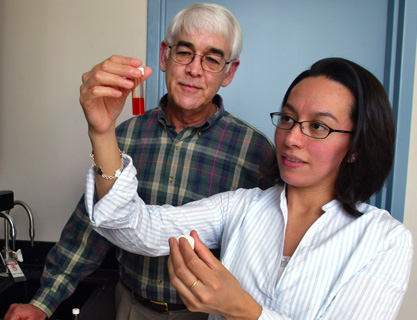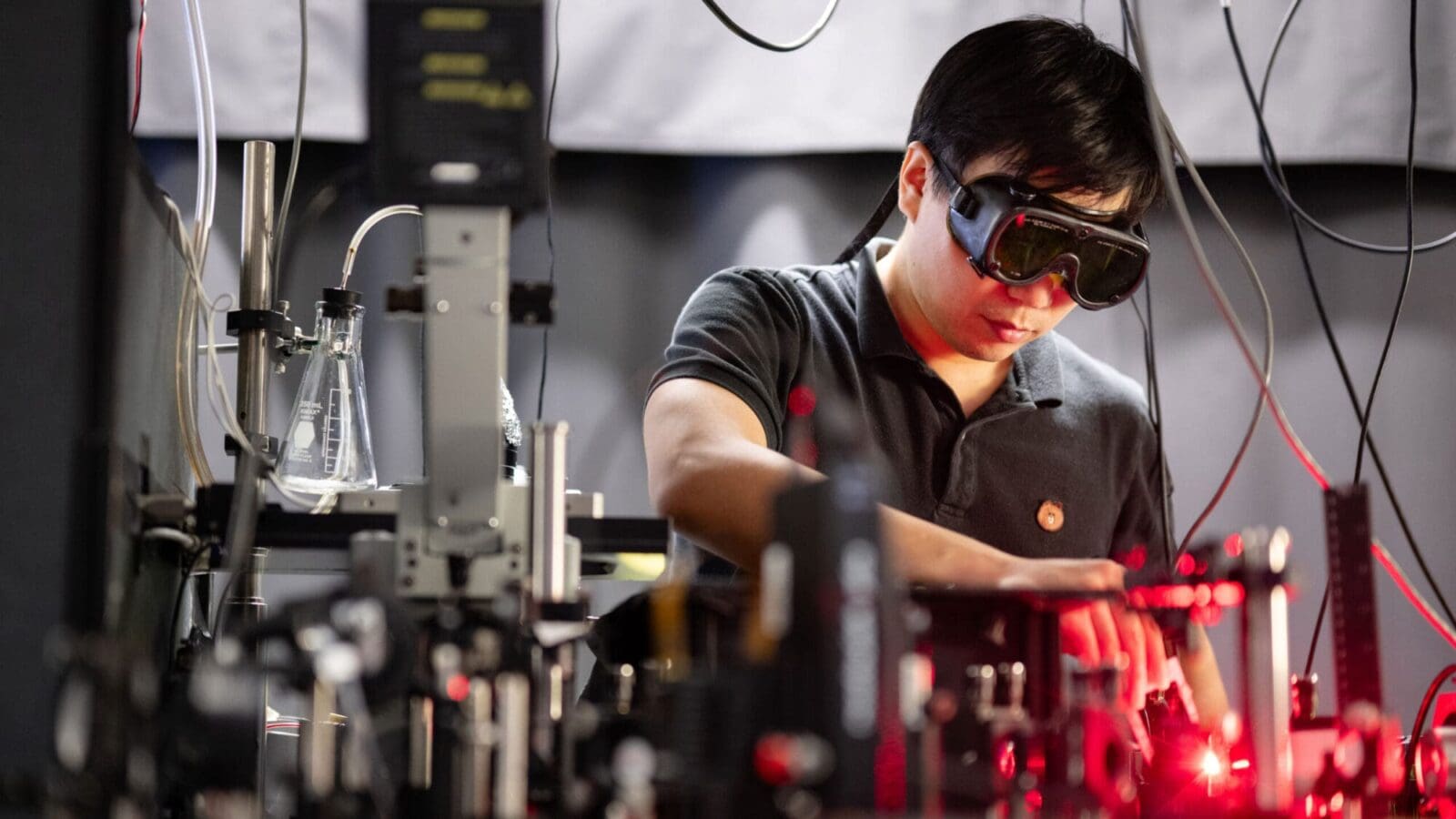Frontiers of health: Little lifesavers: Nanoparticles improve delivery of medicines and diagnotistcs
By
on
Precisely sized particles improve delivery of medicines and diagnostics
Tiny particles filled with medicine may also contain answers to some of the biggest human health problems, including cancer and tuberculosis. The secret is the size of the package.
A team led by Robert Prud’homme, professor of chemical engineering and director of the Program in Engineering Biology, created the particles, which are only 100 to 300 nanometers wide-more than 100 times thinner than a human hair.

“The intersection of materials science and chemistry is allowing advances that were never before possible,” Prud’homme said. “No one had a good route to incorporate drugs and imaging agents in nanoparticles.” His Princeton colleagues include chemical engineering professors Yannis Kevrekidis and Athanassios Panagiotopoulos, and mechanical and aerospace engineering professor Wole Soboyejo.
The potent packages are too large to enter normal cells, but will pass through large defects in the blood vessel walls in solid tumor cells due to their rapid growth rate. They also could improve the delivery of inhaled drugs as they are large enough to lodge temporarily in the lungs, but too small to trigger the body’s lung-clearing defense systems.
Prud’homme’s research group is part of a Grand Challenges in Global Health research project led by David Edwards of Harvard University and funded by the Bill and Melinda Gates Foundation to develop nanoparticles-based aerosol vaccines for tuberculosis and diphtheria.
“Professor Prud’homme and his group have developed novel nanoparticle systems that are particularly attractive for applications in the developing world” because of their potential for use on a large scale at a relatively low cost, Edwards said.






